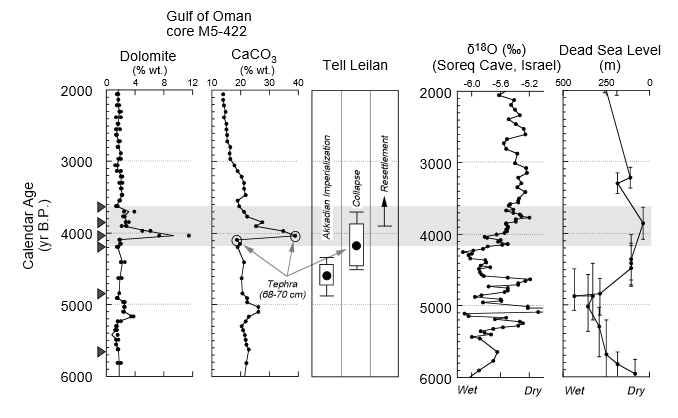What caused the fall of the Mayan civilization? Various
environmental and human factors have been proposed to explain the unique
decline of the Mayans, though some academics believe that the multiple causes
for their decline can be explained through environmental change (Lucero 2002). So to fully understand why environmental change could have
be the overall driver in the decline on the Mayans it is important to
understand the civilizations geographic and social context.
 |
| A Map showing the location and extent of the Mayan Empire Source: Mayan Countdown |
The ancient Mayan civilization is located on the Yucatán
Peninsula and its climate is controlled in part by the Inter Tropical
Convergent Zone (ITCZ) which result in seasonal monsoons (Haug et al 2003). In
laymen terms it means that the Mayans experienced periods of intense rainfall
and periods of intense droughts, some of which could last up to and beyond four
months (Lucero 2002). For other civilizations such as the Mesopotamians
and Ancient Egyptians, these dry periods are offset by being situated on and or
located in the vicinity of, permanent water sources (deMenocal 2000;Butzer 1980c). The Mayans however
were typically situated in the Yucatan’s jungle, away from any source of
permanent water access such as lakes and rivers ( Linden 2006). In turn this led
to the development of various technological advancements to: collect and
impound water in artificial lakes and reservoirs, move and distribute the water
to the masses, conserving it for periods of intense hardship (Lucero 2002, Linden 2006).
| Iconography of Chac, Mayan God of rain Source: Project Maya |
In turn water itself became a symbol of the elite’s power
and led to the development of traditional social interactions which were
underpinned by the ‘summoning’ of water from the heavens ( Linden 2006). Rituals
were undertaken by the ruling elites to appease Chac, the Mayan God of rain, so
that he might bring forth rain and supplement their people (Lucero 2002). These
rituals reached a point where the populous believed that their ‘King’ or ruling
elite were actually in direct contact with the gods, or were in fact
reincarnations of the gods themselves, resulting in praise and tributes from
their subjects (Lucero 2002). In turn this ritualistic practice underpinned the
very fabric, structure and integrity of the whole Mayan civilization.
 |
| Iconography Showing a King Seated upon a water lilly Source: Pem.org |
It was not just the notion of ‘deity’ which the ruling elite
adopted; the notion and iconography of the Water Lilly became central symbol of
the elite (Lucero 2002). Water Lilies themselves only grow in exceptionally
clean bodies of water and are therefore an exceptional biological indicator of
water quality. If a lake has no Water Lilies, then most likely the water is
stagnant, polluted and just unhealthy to drink. Therefore the adoption of the
Water Lily in the elite motif indicates that they were the ones creating the
safe water resource for the people, it was they who were ensuring their
survival, and it was them who had the dominance over such a precious scarce
resource (Lucero 2002).
 |
| Example of Mayan Aquaducts Source: MNN.com |
Water was so important for the Mayans, probably more so than
other civilizations, what would happen if that access to water become more
limited, what if the water became stagnant and rife with disease? It certainly
would not be an easy ride for the ruling elite, in fact the Mayans experienced
several drought events throughout the civilizations history, all of which will be
explained in my next blog.



